DISCLOSURE: AS AN AMAZON ASSOCIATE I EARN FROM QUALIFYING PURCHASES. READ THE FULL DISCLOSURE FOR MORE INFO. ALL AFFILIATE LINKS ARE MARKED #ad
Camera sliders are an incredible tool, and the variety of options out there means they are accessible for filmmakers across the board.
There are many slider options, with a vast variation in the price range.
I use an Edelkrone motorized slider for my work, which is great for some applications, but sucks for others.
Fx, it’s great that I can set it to do a smooth motion, but I can’t get it to do a very fast one. And I can’t uncouple the motor so I can do it by hand. For that, I would need an unmotorized one.
So you see, many things to consider when buying a camera slider. Below, I’ve tried to help you with a list of things to consider.
Table of Contents
Introduction to camera sliders.
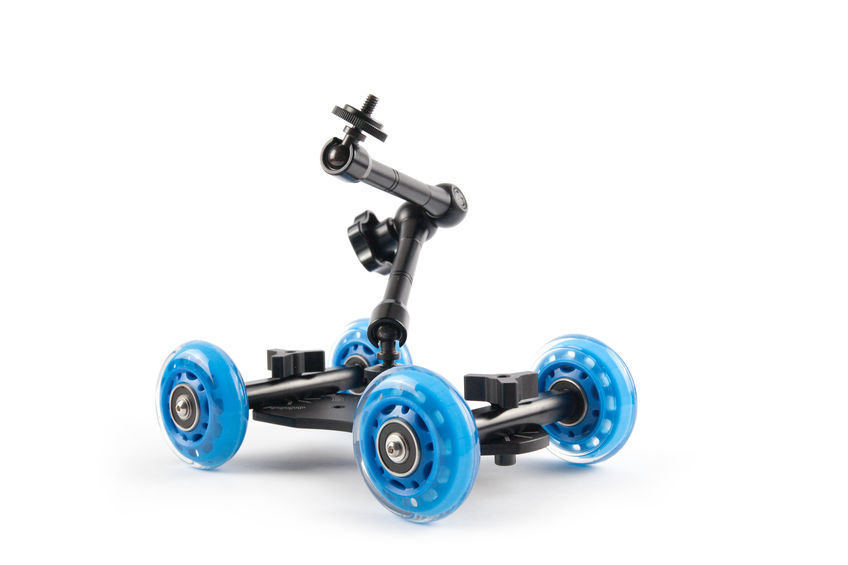
Sliders are a great way to get nice-looking stabilized footage.
Sliders are especially useful in establishing shots or reveals as a narrative filmmaker, and in documentary filmmaking, they are commonly seen in interviews, b-roll, and time-lapse footage.
The variety of shots you can achieve is limited only to your creativity.
A tripod or two will allow you to put your slider at an angle or even vertically, and a fluid head mount lets you pan and tilt the camera.
Because of this expanded movement, you can achieve more shots with a slider than a horizontal tracking shot, push-in, or pull-out.
A Camera Slider Allows For Many Creative Types of Shots
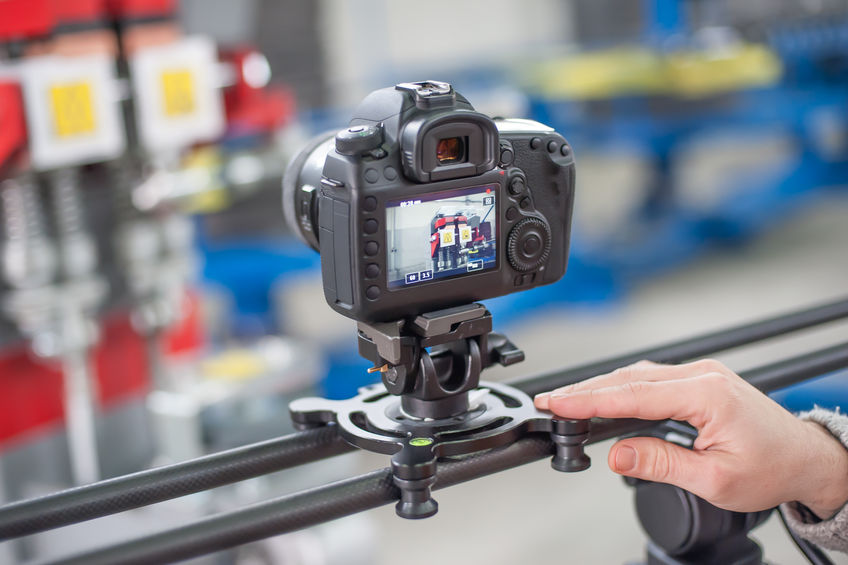
When using a slider with a fluid head mount, you can adjust pan, tilt, and focus while moving the camera smoothly with practice.
Whereas adjusting focus with a gimbal isn’t always an option or requires a second camera operator, doing so with a slider is entirely possible with a crew of one.
Furthermore, devices and motors exist to create a mechanized pan. Though we will cover this later, sliders with built-in motors, drive belts, and cranks are all options to create the smoothest tracking shot possible.
Sliders are a must to add smooth movement to your shots. Especially for the independent filmmaker operating with a small crew, using a slider with practice is one of the most efficient ways to create exciting and kinetic shots.
As with any camera gear, sliders exist to help you, as a filmmaker, tell your story.
By adding new camera moves and opening your filmmaking up to a variety of new shots, sliders can inspire us to be more ambitious with our content and achieve a level of production that makes us proud.
The Pros and Cons of Using a Slider vs. a Gimbal
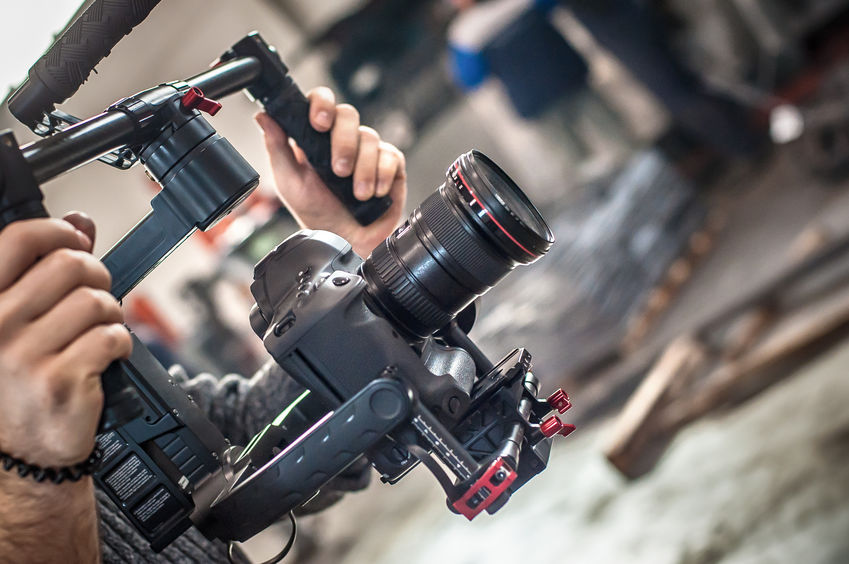
As I mentioned, sliders are often wrongfully compared to other stabilization methods. Though you can achieve a smooth tracking shot with a motorized gimbal, the times to use one versus a slider depend heavily on context.
Sliders are often around only a meter in length. Therefore, you won’t achieve long tracking shots (when a gimbal would be useful).
However, sliders excel for settings such as interviews or establishing shots where you want to rack focus or reveal a subject.
Unlike gimbals, which require precise balance and often leave you unable to adjust the focus manually, with practice, you can rack focus while moving the camera on a slider. This can greatly increase the type of movements available to you.
What To Look For When Buying A Slider
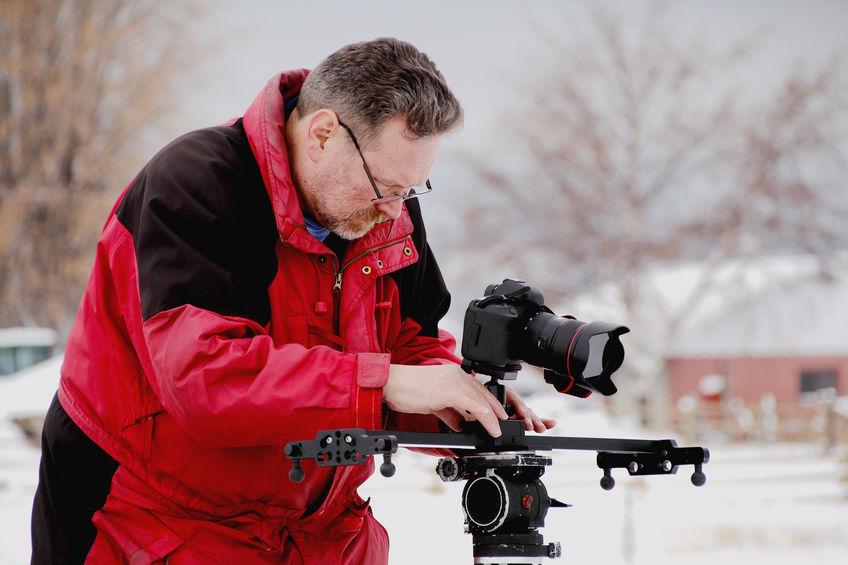
Depending on what you hope to use your slider for, the main specs to consider outside of price include the material, the length, lens options, the feet, crank belts, motorization, and different mounts.
Understanding what you want to use your slider for is also important. What type of filmmaking do you typically do, and what do you hope your slider will offer you as a filmmaker?
The Material and Weight of Your Slider
Sliders are primarily made of four different materials: carbon fiber, aluminum, steel, and an aluminum/steel compound. These materials affect not only the durability but also the weight of the slider.
For some filmmakers, the weight won’t be an issue. If you shoot in controlled settings that are easily accessible, a carbon fiber slider might not make a huge difference.
However, suppose you’re hiking into the backcountry to do nature photography, carrying a steel slider and most likely a tripod to accompany it. In that case, it may cause you to regret your decision.
A carbon fiber slider can weigh as little as one kilogram (such as the 30cm Neewer Carbon Fiber Camera Slider (link to Amazon)), making them extremely applicable in remote settings.
However, double-check the load capacity since these lightweight models may be insufficient to carry much more than your standard DSLR.
The material of the slider also often affects how smooth it is. Though light and still useful, often carbon fiber won’t be as smooth as steel or aluminum.
Finally, if you plan on using a motor, the load capacity will vary, as will your ability to adjust the incline. We will discuss motorized sliders later on.
Ideal Slider Length and Travel Distance

Another important consideration when purchasing a slider is the length.
The first obvious impact of length is weight and portability.
You might want a short slider that can easily fit in your backpack if you’re traveling. Certain sliders, such as the Zeapon Micro 2 on Amazon, extend as you track, offering double the distance of the length.
But the second obvious impact of the slider’s length is the range of movement you will receive. Here, it would be best if you decided between portability and versatility. Especially when you apply more creative uses to your slider, shorter lengths can be inhibiting.
For example, if you attach your slider to a tripod and swing it to mimic a crane shot, a 30cm slider will not look as impressive as a meter-long slider.
If you’re using a meter-long slider, you may also need more gear to use it to its full ability.
Longer Sliders Require a Stable Base

Unless you always use a table, two tripods will be required to mount the slider properly and use its full range of motion without tipping over.
Especially if you’re working with a heavy camera, take caution to ensure your tripod and slider won’t tip over.
Whereas a shorter tripod can be mounted easily on one tripod or in unique locations like a bookshelf, a lengthy tripod is more limited regarding where it can be set up.
The Length of a Slider Affects the Type of Lenses You Can Use
The tripod length also may affect what kind of lenses you use.
Due to their greater field of view, wide-angle lenses make it difficult to do push-ins and pull-outs.
However, wide-angle lenses also give the illusion of more motion since the image isn’t compressed.
Conversely, a telephoto lens on a slider will compress the field of view and make any motion in dolly shots less dramatic.
The problem with wide-angle lenses on a longer slider is that you risk getting the slider in the shot. This is where having a fluid head (between the slider and the slider base) comes in handy.
Sliders and Fluid Heads
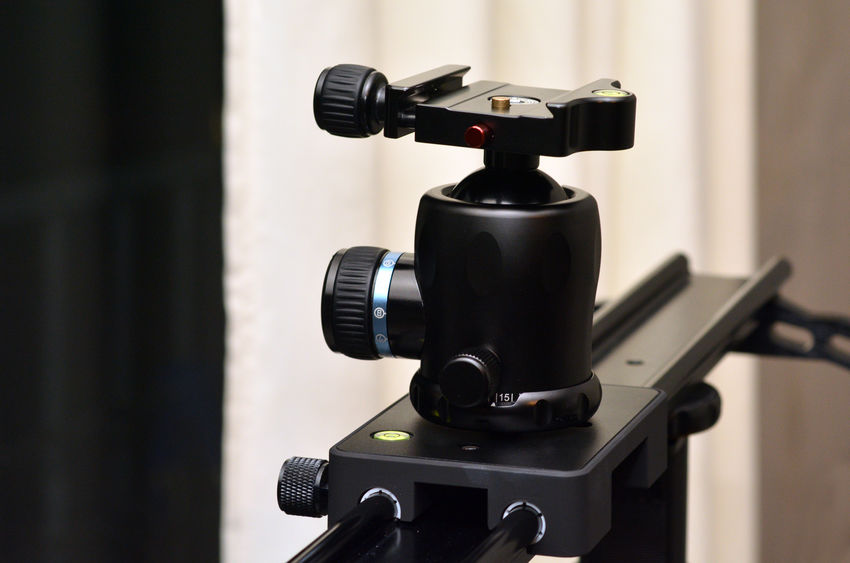
If you want to push in on a fixed slider, you may need to use a telephoto lens or have a head mounted to increase the distance you can move before the slider comes into view.
A fluid head mount (between the slider and the camera) will add some much-needed inches to separate the camera from the slider.
Having a tripod head is extremely beneficial and allows you greater usage. The added height on the slider means your wide-angle lenses have an increased range of motion until the slider comes into view.
Tripod heads also offer much more control while you’re using your slider.
Combining horizontal motion with a pan or tilt helps significantly, and the handle on a fluid video head makes a smooth shot much easier to achieve.
Some sliders, such as the Zeapon Micro 2 on Amazon, extend while you’re moving the camera. Therefore, you can use a wide-angle lens and push in without seeing the track.
The Feet and Setting Up Your Slider on Different Surfaces
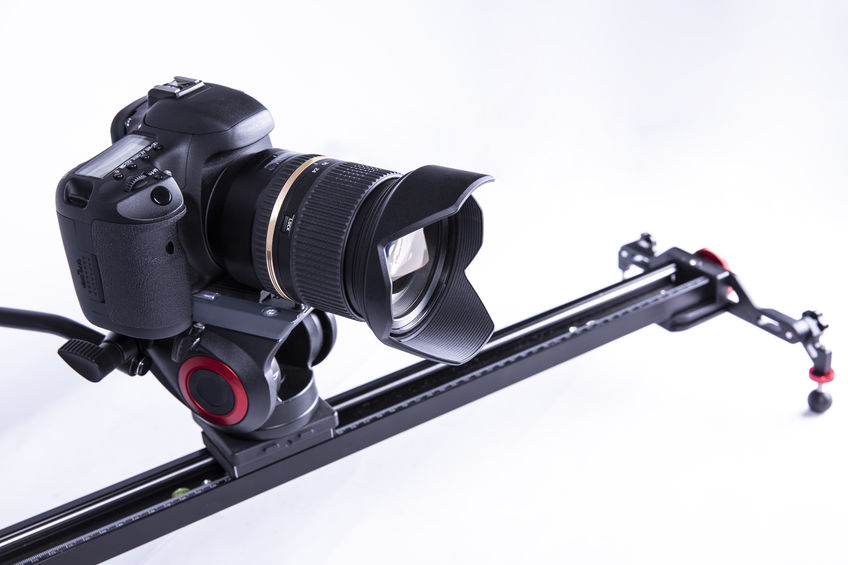
Another important facet of selecting any slider is the feet. This affects how and where you can set up your slider.
The feet will not be used if you intend to mount your slider on one or two tripods. However, the feet will play an important part if you mount your slider on the go on uneven surfaces such as logs or rocks.
Many sliders have fixed rubber stoppers for their feet. If we look at the GVM Motorized Slider here on Amazon, four rubber balls can extend but not rotate.
This is helpful for use on a table or a flat surface that may be minorly uneven, but something more extreme, such as a boulder, will be hard to make work.
Now, if we look at the Neewer 80cm Carbon Fiber Slider (link to Amazon), there are adjustable and secured legs that can adjust from 8.5 to 10cm, allowing a large scale of adjustment.
Removable and foldable legs are often beneficial, provide great control, and make leveling easy.
Motorization, Fly Wheels, and Drive Belts
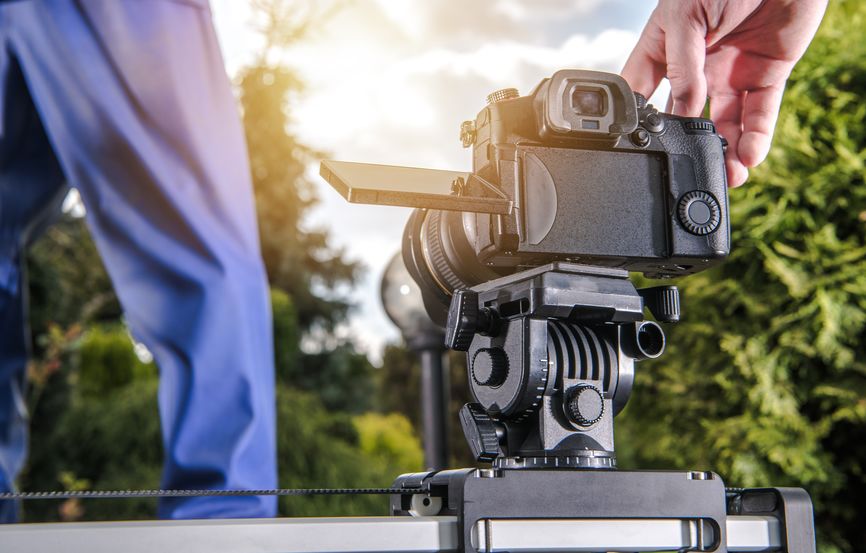
Motorization, crank belts, and flywheels are different methods of mechanization that sliders employ to help achieve the smoothest shot.
Though getting a slider for a lower price is possible, these features are instrumental. They can allow you to get great time-lapse footage or add a second camera on an interview with movement without a second camera operator.
So they’re a great option if you’re a single shooter.
Motorization is an autonomous way to have movement in your shots, and you won’t risk bumping the slider and ruining a shot. If you still want manual control, most motorized sliders can also be controlled by hand.
Motorization is essential for time-lapse motion. And even for real-time shots, mechanization can be very helpful if you need precision.
Motorization for sliders can either be built-in or a modular attachment. Sliders such as the GVM Motorized Slider have a built-in belt and motor with a remote where you can adjust speed and direction.
When the slider has in-built motorization, this is often driven by a drive belt, whereas attachments are often moved by rope or wire.
A flywheel is another great attachment to your slider if you want to help ensure smooth movement. A flywheel is a counterweight that reduces force changes in inconsistent slides.

Unlike motorization, the mechanics of a flywheel work to limit the imperfections that may be found in a human push.
Often, flywheels work with a belt-driven pully system in which you crank a handle to move the camera, and doing so can give you manual precision without having to deal with an electronic interface.
Other sliders, such as GVM’s slider, which includes a flywheel, have it on the bottom of the camera mount. Though you still push the camera with your hand, the dampening from the flywheel takes away natural shaking, and its sensitivity can be adjusted.
Whether you pick up a motorized slider, one with a drive belt, a flywheel, or none of the above, there are strengths and weaknesses.
For example, drive belts, motors, and flywheels all add weight.
Additionally, though the smoothest option, the interface and setup behind a motorized slider can be cumbersome.
How To Use A Slider
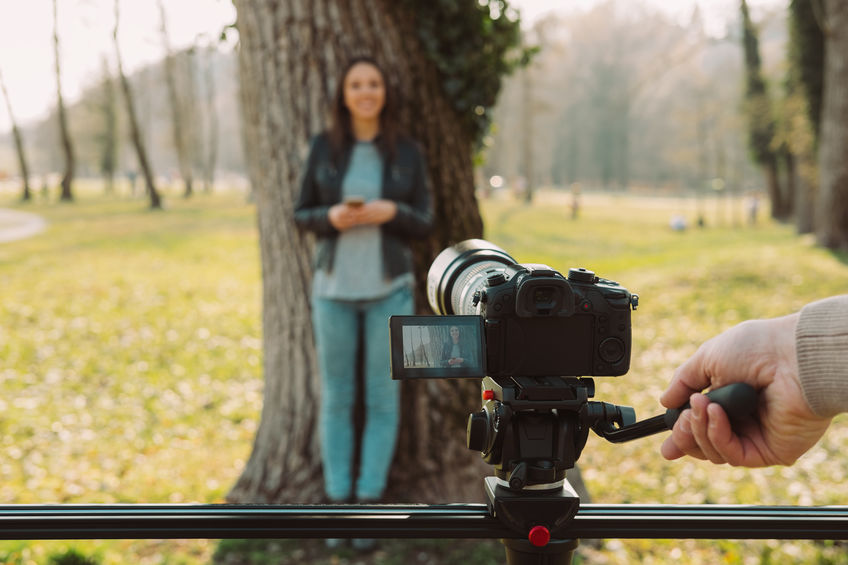
The concept behind a slider and its usage are relatively simple. That being said, some specific tricks and issues may come up.
If you purchase a slider with no mechanized method of smoothing your shot, it’s pretty simple.
However, those that include motors all have varying interfaces and setup processes.
Sliding the base plate onto the rails and affixing the feet is essentially all that is needed for the simplest sliders.
Typically, the feet and base plate will detach for traveling purposes.
Once it’s assembled, you push the camera up and down the track.
The challenge with sliders with no mechanics is that nothing works against your human push, so having a steady hand and a stable surface is essential.
Make Sure the Drive Belt is Secure
Motorized sliders and ones with drive belts can be a bit more complex, and their setups depend very much on the brand and model you’re using.
However, one very important consideration is ensuring your drive belt is secure. This will ensure accuracy with motorized placement; if you use a crank, a secure drive belt means no slipping.
Many motorized sliders are also moveable by hand, but using the motor is preferred. How to do so depends on your motor, though it typically involves setting start and endpoints, durations, or loops.
A flywheel slider can be pushed by hand or crank if it has a drive belt. Setting these up can be more involved but is typically faster than setting parameters for a motorized slider.
It is important to remember that if your slider has a flywheel, you can adjust the resistance. This is essential to remember as it helps you adjust the speed and stability of your shot.
If possible, you always want some resistance against your hand.
When To Use A Slider
Perhaps the more important question to ask is when to use a slider.
Though sliders create smooth shots, it is important not to get carried away. Because they remove the human touch, repeatedly using sliders in the same fashion can be tiresome and look mechanic.
Sliders are great at doing reveals, establishing shots, b-roll, and time lapses (if they are motorized). However, you are not limited to horizontal movement only when using a slider.
Though the slider motors typically only allow for more or less lateral movement, different setups can allow great variation while successfully capturing smooth footage.
Tracking and dolly shots are great, but the possibilities greatly expand when you combine a slider with a tripod (or two) and a fluid head mount.
Creative Ways to Use a Slider
Below are some of the most common and useful shots you can achieve with a slider outside the typical lateral movements. The limits are truly up to the imagination; hopefully, this list will inspire your creativity to expand your usage.
If you have a fluid head mount on your slider, playing with pans, tilts, and manual focus are great ways to get inventive with your cinematography. So, here are some shot ideas to spark your creativity.
First is the pan-slide. This is a relatively simple shot that involves panning while sliding. However, the extra motion of the pan allows for a more dynamic image, and it can be great to change the subject of the shot.
Another way to play with your slider is to adjust the lateral tilt. In so doing, you will no longer be moving flat. This is an interesting way if your subject is changing in height or you want to reveal something.
Many sliders, though not all, are also able to mount vertically on a tripod. Slipping up and down allows you to mimic a pedestal effect and is a type of shot often seen when people move from sitting to standing or vice versa.
This move can also be paired with a tilt if you want to change angles while staying on a subject.
One of the most interesting uses I’ve seen for a slider that pushes the limits of its usability is to attach one of the ends of the slider to your tripod mount while having the camera at the other end, essentially creating a long arm that can mimic a crane or jib shot.
Not all sliders have the necessary amount to execute this. Some sliders do not have tripod mounts or are short in length. However, adding a fluid head mount to any slider and playing with the incline is a great way to develop smooth shots.
You might also like our hands-on review of the Kessler Second Shooter Slider.


Great advice. Except… You need film to film. Cinematographer, Video Maker, Movie Maker, digital shorts. Apply your creativity! 🙂 You have a great deal of talent. The more you understand your craft the better you become over all the others. 🙂